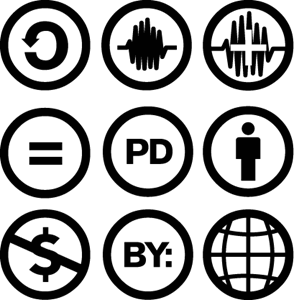Copyright and teaching
Copyright is the legal right that the creator(s) of a work have, i.e., the right to determine how the work may be used. Copyright applies automatically and no registration is required. Virtually all material used in teaching or research is protected by copyright. The copyright period generally lasts for the creator’s lifetime plus 70 years.
Copyright consists of two components: economic rights and moral rights.
There is a great need to copy and use material produced by others for teaching purposes. Different copyright agreements and licenses therefore regulate the usage of material in education. There are also free licenses allowing the copyright holder to specify how the material may be used.

Copyright guidelines for teachers
- Guidelines (document download)
Using electronic course material
Most e-books and e-journals available at the university are covered by licensing agreements between the library and different distributors. The conditions for use are determined by the publisher or distributor and may differ from case to case.
As a teacher you are generally allowed to:
- Upload articles to Canvas
- Link to e-books and articles from e-journals
Please note that you have to include https://login.bibproxy.kau.se:8443/login?url=
before the web address so that the material can be reached from outside the university campus - Print out and use the material for educational or research purposes
But you are not allowed to...
- Download and distribute copyrighted journal articles, or to publish them on websites, mailing lists, etc.
- Use articles for commercial purposes, to republish, distribute or alter the contents
- Copy or download entire journals systematically
Open Access – free use
A large number of scientific articles are published Open Access (OA). These may be used freely, as long as sources are acknowledged and the content is not distorted or plagiarised. You can find these articles by searching the library’s databases or Google Scholar.
The Bonus Agreement – using printed course material
The so-called Bonus Agreement between the university and Bonus Copyright Access facilitates the copying of shorter texts for teaching purposes. When material (e.g. e-books or e-journals) is protected by other licensing agreements, those take precedence.
The agreement allows teachers and students to copy shorter pieces from published Swedish and foreign works, including books, teaching materials, journals, digital publications, illustrations etc. You are, however, not allowed to copy moving images and recorded works such as TV programmes, YouTube clips, films, audio files, etc.
Copying and using material according to the 15/15 rule
The Bonus Agreement allows you to copy and share material – even digitally – according to the so-called 15/15 rule. This means that you may copy, scan, download or distribute 15 pages, but not more than 15% of the total number of pages.
You may also upload these pages to Canvas, or share them with students, researchers or teachers, but you may not distribute them outside Karlstad University.
If you need to copy a large number of pages, you usually need the permission of the publisher and copyright holder.
Obtaining permission from copyright holders
To use material not covered by the existing licenses and agreements, you need permission from the copyright holder. It is often easy to obtain permission.
- Start by contacting the publishers. They will advise you whether you need to contact other copyright holders.
- Ask permission in writing and keep the permission you are given. Using copyrighted material without permission may be costly.
Images
Copyright also applies to photographs, tables, maps, works of art, illustrations, etc. that are printed or published electronically. You need the permission of the copyright holders to use copyrighted images in your own published texts. This also applies to students. If you lecture at Karlstad University, you may use copyrighted images in a PowerPoint presentation if you indicate the name of the copyright holder and source of the image.

